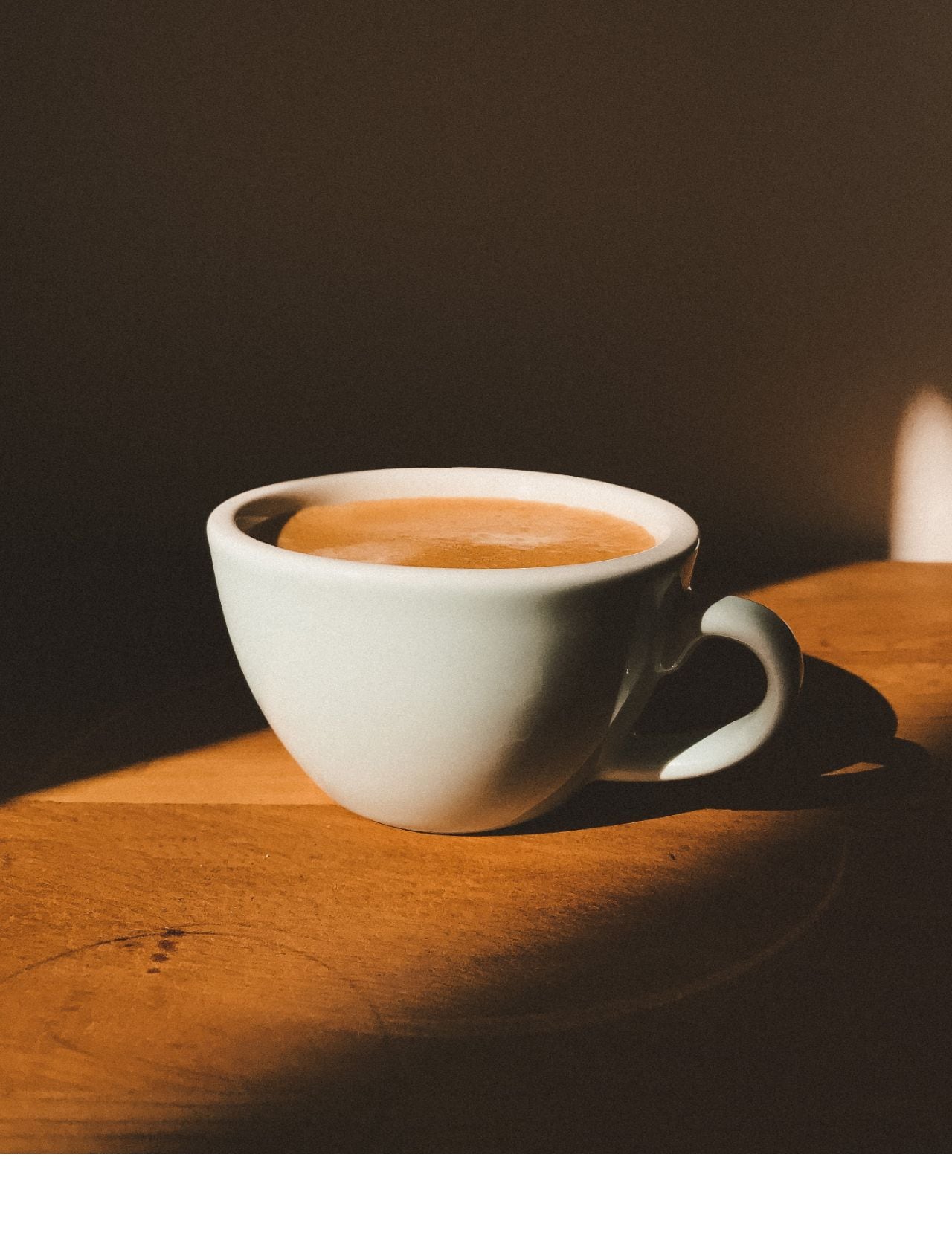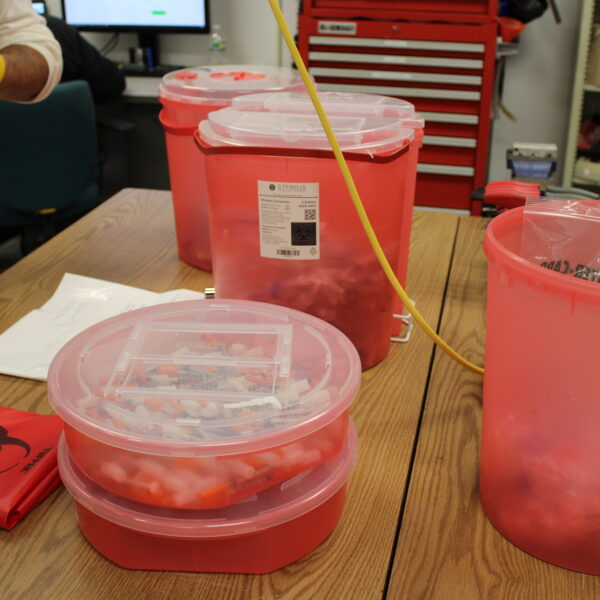Welcome to the first edition of our Sustainability Spotlight series in which we take a familiar consumer or business practice and spotlight the environmental impact in a simple and understandable way so you can make more informed choices about how you both use AND design products.
There’s nothing like a fresh, steaming cup of coffee made just the way you like it. While you might choose your preferred method based on convenience, flavor or ritual, have you ever considered the environmental impact? It turns out that some methods are much better for the environment than others. In this Sustainability Spotlight, we are focusing on the impact that the brewing vessel – the part that holds and filters the grounds – has on your morning cup’s carbon footprint. Assuming beans, water, and energy use are roughly equivalent, it’s the main difference between brewing methods (differences in the machines themselves, when spread out over thousands of cups in the product’s lifespan, are negligible).

Here’s a visual summary of what we found. The volume of CO2 per cup released into the atmosphere by each method is expressed as a bubble. The more convenient options have CO2 impacts thousands of times larger than other methods. Is it worth it? That’s a question worth considering for consumers as well as the companies that make these products. Read on for more details on the sustainability aspects of different coffee brewing vessels.
#1: Mesh Filter
Although the mesh filter baskets designed for automatic drip systems are the largest items on this list, they come out on top for two reasons. First, they are made to brew multiple cups at once; and second, they can be reused over and over again for many years. The average lifespan of an automatic drip coffee maker is about 5 years. If you make a 10-cup pot once a day during that time, you’ll get 18,000 cups of coffee out of that one filter.
At this scale, the filter’s carbon footprint is spread out so much that the impact per cup is virtually negligible; equivalent to a bubble of carbon dioxide the same size as a marble. That’s less than the amount of CO2 you release each time you exhale.
This category isn’t limited to automatic drip machines; any permanent reusable filter method would qualify. A French press similarly produces very little carbon with each cup.
#2: Refillable K-Cup
Good news for convenience-lovers: refillable K-Cups have the second-lowest carbon footprint per cup on our list. Again, this is due to the power of reuse. While they do break eventually, a typical plastic-and-mesh model should last about 1,000 cycles, or 3 years of daily use. That’s a carbon footprint per cup equivalent to a bubble of CO2 the size of a ping pong ball.
That sounds tiny, and it is, but it’s still 4 times more CO2e per cup than the mesh filter. Still, as you’ll see below, a refillable K-cup is a much better option than a disposable one. If you are Keurig lover, this simple sustainability change has a big environmental impact.
#3: Paper Filter
Standard white paper filters, either basket or cone-shaped, are typically associated with automatic drip machines but are also used in the “pour-over” method to make individual cups. They look harmless. And, indeed, they have the lowest embodied carbon footprint of any item on this list. But they are only used once so their impact isn’t spread out. For a 10-cup pot, each cup’s share of the paper filter’s carbon footprint is equal to a bubble about the size of a tennis ball. If used to brew a single cup, that volume expands ten-fold to a bubble 6 inches in diameter, the size of a large grapefruit.
As with any disposable, there are options that can help mitigate (though not eliminate) negative impacts. Unbleached paper filters help to reduce the carbon footprint per cup by about 30-40%. Recycling or composting used paper filters keeps material out of landfills (where it can generate methane) and since plants capture carbon from the atmosphere, any CO2 released as the paper decomposes is just returning to its source.
#4: Aluminum Espresso Pod
These little pods are used in Nespresso brand machines to make coffee’s potent European cousin, espresso, in a convenient, single-use package. The good news is that the cups and top seal are both made of aluminum, which can be endlessly recycled. The bad news is that recycling and manufacturing aluminum still require a lot of energy, and many of these pods don’t find their way into recycling bins.
The carbon footprint of each pod is equivalent to a bubble of CO2 about 8.5 inches in diameter, the size of a soccer ball. That’s nearly 1,500 times the volume of the marble-sized bubble of the mesh filter.
In a rare case of corporate stewardship, Nespresso will take back their spent pods for separation and recycling into new aluminum products. However they don’t claim to use recycled aluminum in the pods themselves, potentially due to food safety concerns, which is why they still have such a large carbon footprint. It’s not yet a circular system, but it has the makings of one.
#5: Single-Use K-Cup
Coming in last is the single-use K-Cup. Its carbon dioxide bubble is the size of a basketball! This 9.5 inch sphere represents nearly 2,000 times the carbon footprint in each cup as the reusable mesh filter.
Environmental concerns about K-Cups are nothing new, and Keurig has taken some action to address them, such as announcing sustainability commitments and transitioning to “recyclable” #5 polypropylene plastic in their pods. Even so, the plastic cup must be manually separated from the seal and grounds before recycling, which limits participation. And as with the other disposables on this list, the use of energy-intense virgin materials in their production more than offsets the benefits of recycling.
Yet single-use pods like K-Cups remain staggeringly popular, not to mention big business, because they address the very strong consumer desires for convenience, variety and personalization. My office once had a Keurig machine, and I used it multiple times a day. But as a group, we eventually decided that the environmental cost was too much to bear. I bet we aren’t the only ones.
We all make dozens of small choices every day, like how to make our coffee, without giving them much thought. Yet as our Spotlight shows, even small decisions compounded over time can make big impacts. Building a sustainable future depends on making better, more informed decisions. This is true for us as consumers AND for the companies that make our products. As cultural winds shift away from single use and toward sustainability, product companies must learn to meet consumer needs in new, more sustainable ways.
We have a lot to talk about… I’ll put a fresh pot on.
At Product Insight we’re committed to helping companies develop innovative solutions for a more sustainable future. If you’d like to learn more about how you can make your products more sustainable, please reach out and connect.



